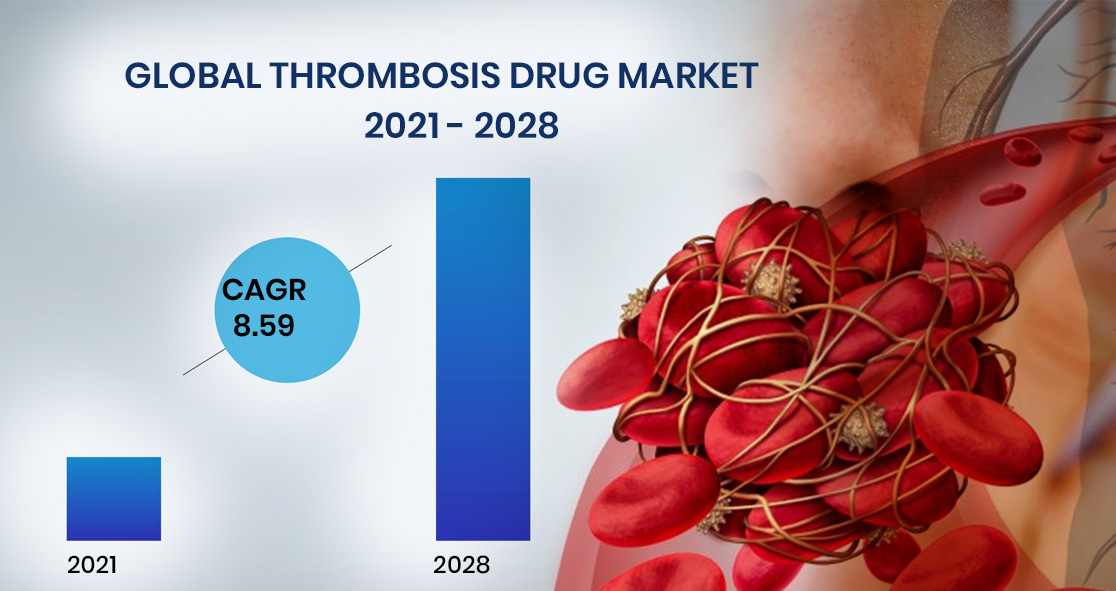The Global Thrombosis Drug Market is expected to grow in the forecast period of 2021 to 2028.
The drug market report, which is now available on Data Bridge Market Research, predicts that the market will reach nearly $17 million by 2028, growing at a CAGR of 8.59%.
The market is expected to grow because of increasing awareness amongst doctors and patients regarding the advantages of life-saving thrombosis drugs.
The industry’s key players include AstraZeneca, Boehringer Ingelheim, Johnson & Johnson, Sanofi, Aspen Holdings, Bayer, Bristol-Myers Squibb, Pfizer, Baxter, GlaxoSmithKline, among others.
Thrombosis occurs when blood clots block your blood vessels, according to Johns Hopkins Medicine. There are 2 main types of thrombosis – venous thrombosis and arterial thrombosis.
Venous thrombosis occurs when the blood clot blocks a vein. Veins carry blood from the body back into the heart. Arterial thrombosis occurs when the blood clot blocks an artery. Arteries carry oxygen-rich blood away from the heart to other organs of the body.
The market is segmented on the basis of drug class, disease type, and distribution channel.
- Drug Class – direct factor Xa inhibitors (anticoagulants), heparin, P2Y12 platelet inhibitor, and other drug classes
- Disease Type – pulmonary embolism, atrial fibrillation (Afib), deep vein thrombosis (DVT), and other disease types
- Distribution Channel – hospital pharmacies, retail pharmacies, and online pharmacies
The incidence and prevalence of cardiovascular disease and trauma cases have been increasing, especially among the geriatric population across the globe. Also, there has been rising availability of generic medicines to treat pulmonary embolism, Afib, DVT, and others.
In addition, there is increasing technological advancement and a rising number of research and development activities, which could further boost the growth of the global thrombosis drug market by 2028.
The report provides details of new recent advancements, trade regulations, import-export analysis, value chain optimization, market share and size, the impact of key players, opportunities, changes in market regulations, etc.
Of all the regions, North America dominates the thrombosis drug market because of the high prevalence of cardiovascular diseases. Europe and Asia-Pacific are expected to grow at the highest growth rate by 2028 due to the rising prevalence of DVT and increasing awareness about the treatment benefits.





















